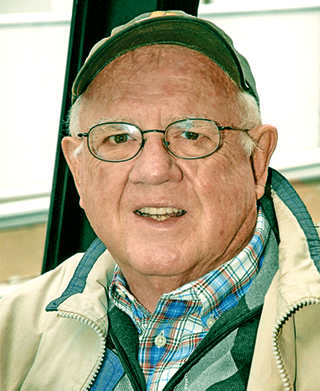The Allred family was practicing regenerative agriculture long before they even had first heard of the term.
Austin Allred and his two brothers, Derek and Tyson, grow potatoes, cherry and apple trees and produce honey, while also running 10,000 beef cattle and milking about 6,000 dairy cows around Royal City, Wash. With 6,000 acres, the family has also added a worm farm and beef processing facility as reported in a Drovers Journal article.
Like many producers with combined family operations, Royal Family Farms focuses on finding a purpose for every acre and every byproduct.
“My dad was no-tilling before it was billed as regenerative,” Allred explains. “He was doing it to reduce diesel usage.
“I accelerated and defined what Dad was doing and put some strategy to it,” he says, with the goals of building organic matter in the soil, sequestering carbon and filtering wastewater.
Extended Crop Rotations, Grazing
Allred recognizes the kind of stress agricultural production can put on the land, but the farm has demonstrated that not only do regenerative practices work, but can accomplished on a large scale.
“Anytime you’re growing a crop that a human can digest, you’re going to put a lot of pressure on the soil,” he says. “It’s really hard to do a total no-till strategy. You can’t plant weeds with your wheat.”
While potatoes are the least regenerative crop the farm grows, they counteract it by working cattle into a long crop rotation for added soil fertilization.
“If 20% of the ground is in potatoes, that land doesn’t come back online for another 6-7 years. And during those years, we do a lot of composting. Other years we do cover cropping and planting multi-species crops to grow microbial activity.”
The family grazes beef cattle on the cover crops, which provides feed while simultaneously adding more soil amendments, such as nitrogen and phosphorus.
Upcycling Everything
Nothing goes to waste. The family works closely with processors who clean and box their apples and turn their potatoes into French fries. Items that don’t qualify for human consumption are upcycled into protein, providing cattle feed in the form of potato culls or damaged fruit or nutrient-rich compost. Wood chips produced when they retire a cherry or apple orchard are turned into cattle bedding, used for with a large-scale worm farm or processed into a carbon-rich biochar byproduct.
The family’s interest in biochar, a charcoal-like substance derived from organic waste, developed out of a desire to add more carbon to their farming operation. They use four machines to burn wood chips into charcoal that, when mixed with compost, recharges carbon in the soil.
“As farmers, we are selling off carbon, whether it’s beef, milk or cherries,” Allred says. “Some 70-to 80% of retired apple, cherry and pear trees in Washington were getting burned at the end of their effective life. Biochar was a way to bring in more carbon and upcycle and compost it.
“We try to upcycle every byproduct into something of value. Eventually it all becomes a soil amendment. It’s only a loss if we let that carbon into the air.”
Reusing Wastewater With Worms
As the family sought a better way to filter and reuse wastewater from their dairy operations their regenerative solution was to invest in worms.
“We started investing in what is now the biggest worm farm in the world about 8 years ago,” Allred says.
Working with a company called BioFiltro headquartered in Santiago, Chile, the Allreds’ worm farm includes 8 acres of what appears to 5-foot -deep swimming pools. These pools serve as the home for about 50 million worms.
“Wood chips make up the medium they live in, and that’s also the filter for the dirty water,” Allred explains. “The dairy is designed to flow to a low spot, where we have two 5,000-gallon vacuums that bring the wastewater to the worms.”
The worms digest the wastewater, removing heavy metals and other contaminants. The waste matter produced by the worms is rich in microbials and the worm castings are mixed with compost that is spread on no-till fields to produce nutrient-dense soil.
Upcycling “Waste” Products
Engaging in large-scale regenerative practices required careful consideration of how everything could work together. They started integrating vegetable, fruit, protein and bees to get to the next generation of regeneration. This includes mixing manure with biochar to create compost, which can dramatically reduce input purchases.
“This year we used no phosphorus and potassium and had equal to or greater yields without it,” Allred says. “And across the board, we have better crop quality. The more natural systems we have in play, the more nutrients we keep in the loop, the less we have to go get inputs.”
Allred acknowledges farmers can filter water through mechanical or chemical systems, but says natural systems are typically cheaper to implement.
“Natural investments are always going to have a long-term return on investment,” he says. “The problem is producers often don’t have the margin to always be investing in long-term return on investment.”
Thanks to carbon sequestration payments and vertical integration, they see regenerative farming practices paying off in a big way. They now purchase 90% less phosphorus and potassium than in the past and significantly less nitrogen.
“Regenerative farming starts to gobble up the biggest expenses any farm is going to pay — your fertilizer bill and your chemical bill,” he concludes. “On the cattle side, your feed bill is your biggest expense. Regenerative farming gives you higher-quality, local food.”






